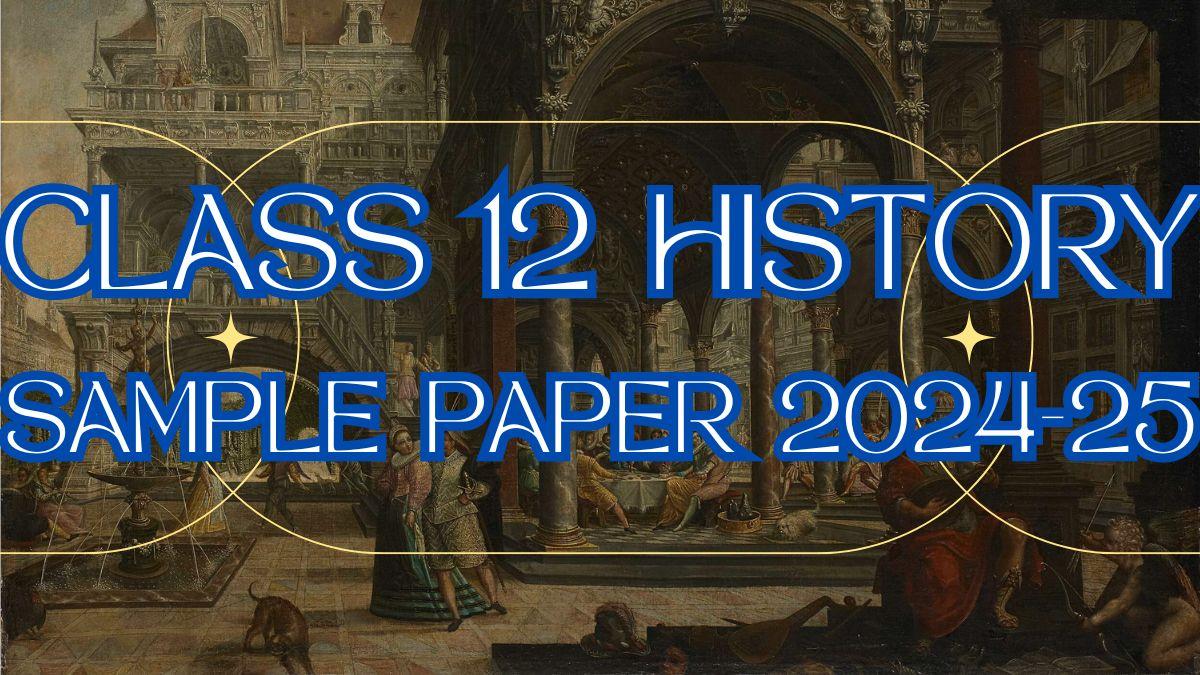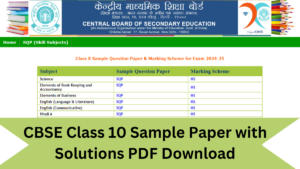Table of Contents
The Central Board of Secondary Education (CBSE) releases the sample papers for class 10th and 12th every year in advance so that students can get an idea of how the actual board exam question paper will be like. The CBSE has released the Class 12 sample papers for the academic session 2024-25 for all subjects. The Class 12 History sample paper 2024-25 is out in the PDF format for free download and the official history sample paper class 12 2024 solved pdf has been given below.
CBSE Class 12 History Sample Paper 2024-25
The Class 12 History subject is highly important for students not only in class 12th but for future government job and civil services examination. That is why, students must study the History subject thoroughly in 12th grade to make their foundational knowledge of this subject strong. One of the best way to strengthen the concepts and knowledge of the History subject is to solve the CBSE class 12 History sample paper 2024-25 released by the board.
History Sample Paper Class 12 2024-25 Exam Pattern
As per the official sample paper issued by the CBSE board for History class 12th, there are 34 questions in total in the question paper. The question paper carries the weightage of 80 marks and students need to complete it in 3 hours. The official sample paper contains five sections. The section-wise details of the official history sample paper class 12 2024 is provided hereunder.
- Section A consists of multiple-choice questions from Question 1 to 21, with each question being worth 1 mark.
- Section B consists of Short Answer Type Questions, specifically Question numbers 22 to 27, with each question carrying a weightage of 3 marks. Please provide your response to the query within a range of 60 to 80 words for each question.
- Section C consists of Long Answer Type Questions, specifically Question numbers 28 to 30, with each question carrying a total of 8 marks. Please limit your response to each question to no more than 300-350 words.
- Section D consists of Source based questions ranging from Question no. 31 to 33, each carrying three sub questions and worth 4 marks each.
- Question 34 in Section-E is map-based and worth 5 marks, involving identification.
History Marking Scheme Class 12 2024 Solved
History Sample Paper Class 12 2024 Solved PDF Download
Students can download the history sample paper class 12 2024 and its solutions along with the marking scheme PDF for free. Download the Class 12 History sample paper and class 12 history sample paper solutions with marking scheme by clicking the PDF link provided below.
Download CBSE Class 12 History Sample Paper 2024-25 PDF
Download CBSE Class 12 History Sample Paper 2024-25 Solutions and Marking Scheme PDF
Previous Years History Sample Paper For Class 12th with Solution
|
Previous Year’s Class 12th History Sample Paper PDF with Solution
|
|||
| Year | Subject | Sample Question Paper | Marking Scheme |
| 2023-24 | History | Click Here | Click Here |
| 2022-23 | History | Click Here | Click Here |
| 2021-22 (Term A) | History | Click Here | Click Here |
| 2021-22 (Term B) | History | Click Here | Click Here |
| 2020-21 | History | Click Here | Click Here |
| 2019-20 | History | Click Here | Click Here |
| 2018-19 | History | Click Here | Click Here |
| 2017-18 | History | Click Here | Click Here |
| 2016-17 | History | Click Here | Click Here |
| 2015-16 | History | Click Here | Click Here |





 CBSE Class 12 Psychology Question Paper ...
CBSE Class 12 Psychology Question Paper ...
 CBSE Sample Paper 2024-25 Class 10 with ...
CBSE Sample Paper 2024-25 Class 10 with ...
 CBSE Class 12 Biology Question Paper 202...
CBSE Class 12 Biology Question Paper 202...










